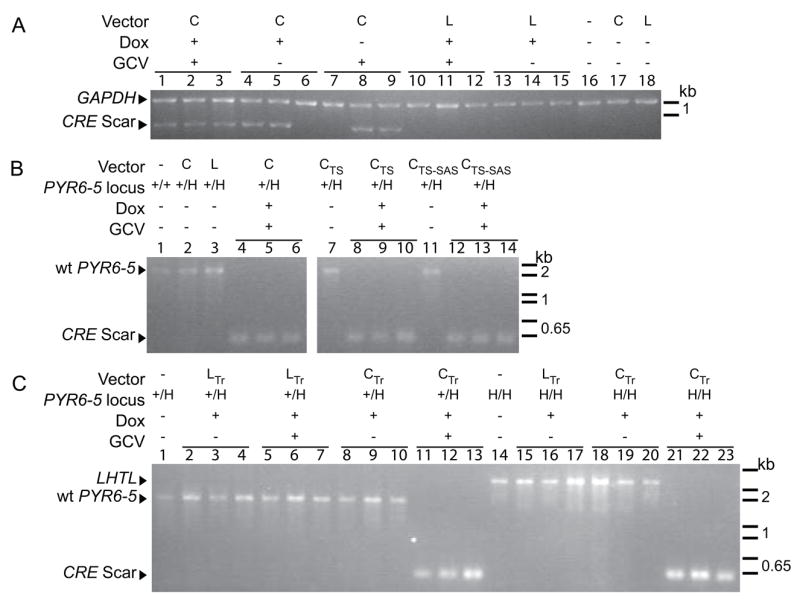Fig. 3.

PCR confirms that reversion to GCV resistance is attributable to CRE. Horizontal bars above the lane numbers indicate triplet independent clones. (A) Primers flanking the LHTL cassette in the β-TUB locus show either the diagnostic scar of CRE-mediated excision or no product, under the conditions used. Primers to the GAPDH coding sequence were included as an internal control. Cells had stably integrated pLEW100 (L) or pLEW100Cre (C), and were treated with or without doxycycline and GCV. (B) CRE-mediated excision from the PYR6-5 locus. The PYR6-5 locus is either wild type (+/+) or heterozygous with LHTL (+/H). In the absence of a CRE scar, primers amplify the endogenous PYR6-5. Cells had stably integrated pLEW100 (L) or pLEW100Cre and its variants (C, CTS and CTS-SAS), and were treated with or without doxycycline and GCV. (C) pLEW100 (LTr) or pLEW100Cre (CTr) was transiently transfected in the presence of doxycycline prior to GCV selection. CRE was also effective in cells homozygous for LHTL at PYR6-5 (H/H). In these cells, without an endogenous PYR6-5 and without CRE-mediated excision creating a CRE scar that is preferentially amplified under the conditions used, the primers amplify the larger LHTL cassette.
